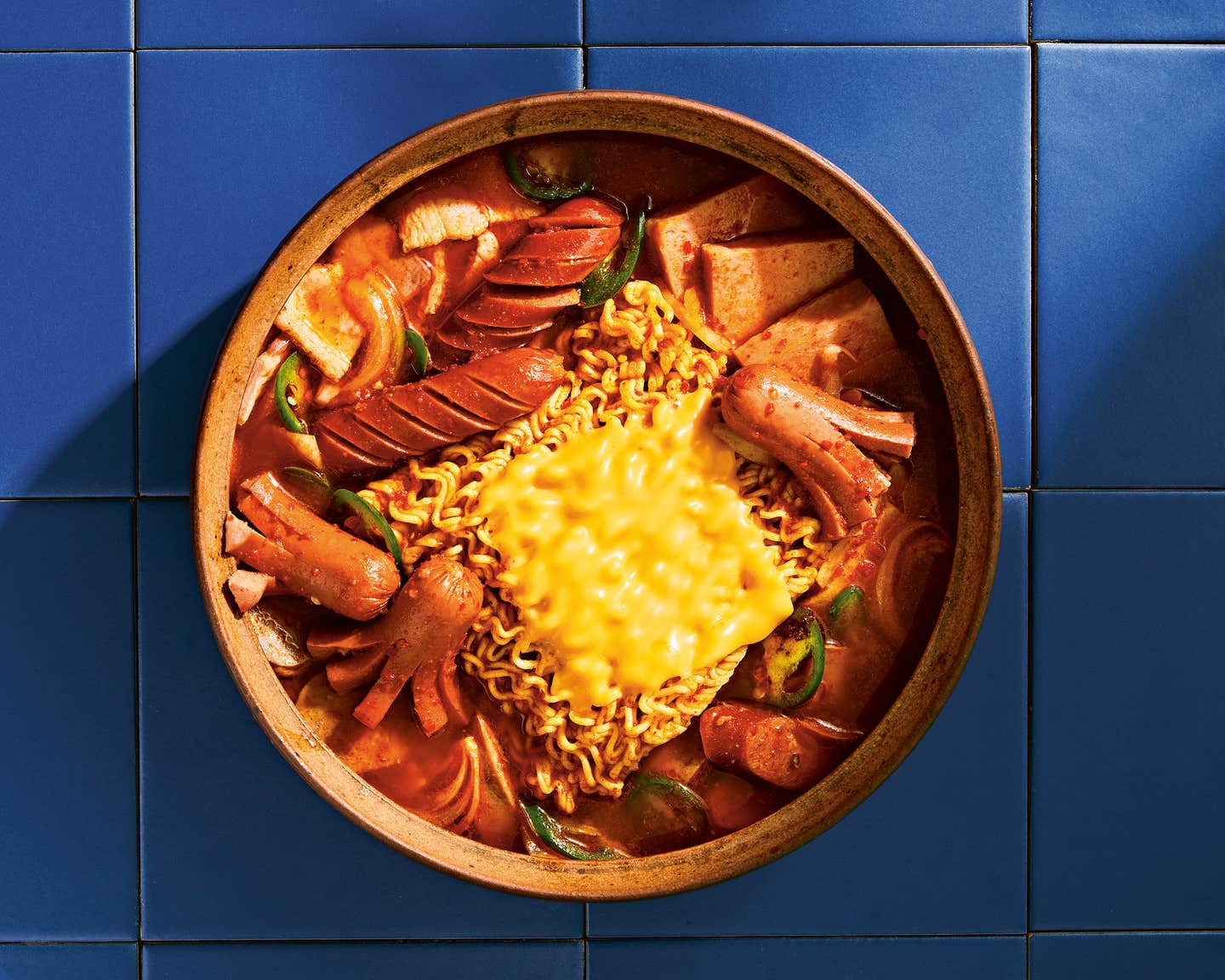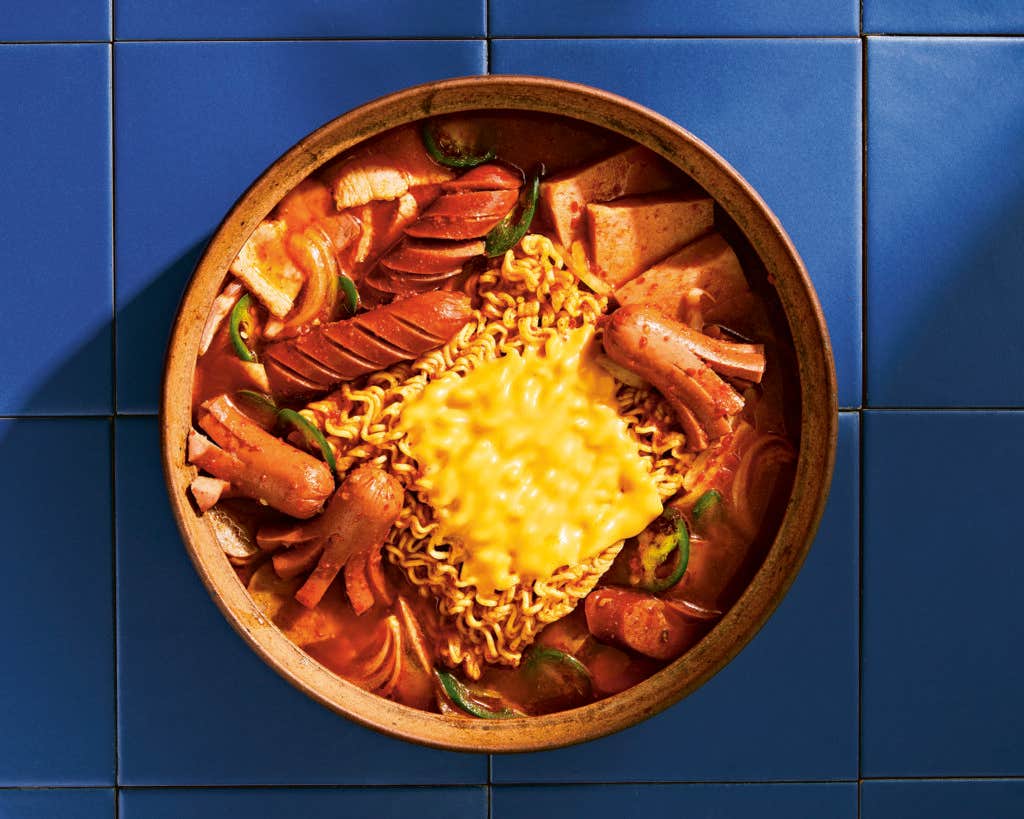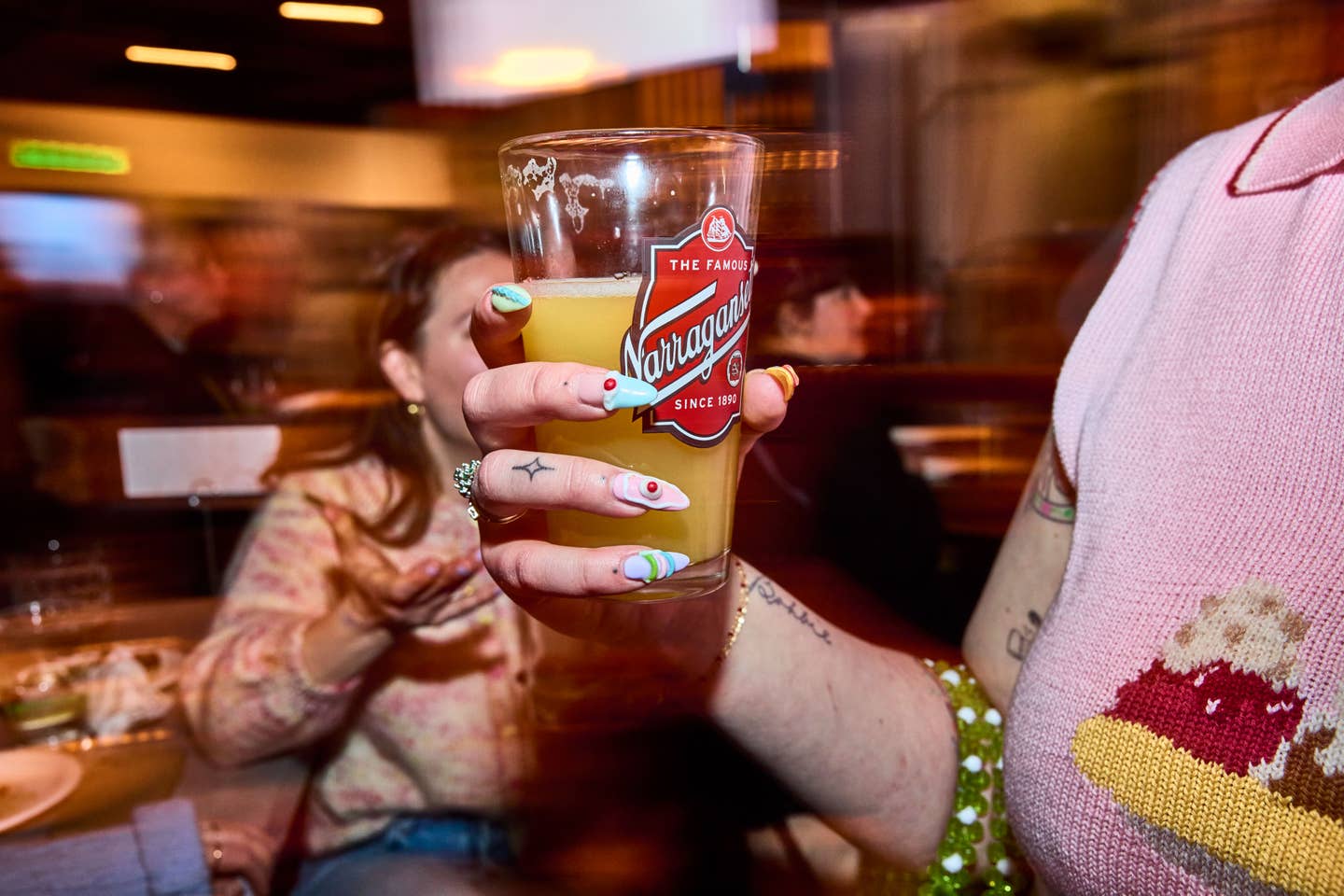
For My Family, This Complex Korean American Dish Represents Celebration
Cookbook author Eric Kim shares his connection to budae jjigae, a Korean War-era staple.
The best food writers—including most of our regular contributors—have one thing in common: they’re the type to tear into a pizza or crack a can of Spam with the same gusto and appreciation as they sit down to a 12-course tasting menu. They’re keen to the fact that culinary hierarchies are bogus—and that comfort fare and quick home cooking are every bit as dear as the most opulent, chef-driven meals.
New York Times staff writer Eric Kim is cut from this same cloth, as seen in his marvelous new cookbook, Korean American: Food That Tastes Like Home. In it, he explores traditional and time-consuming Korean dishes including ganjang gejang and seolleongtang, as well as his own fusiony weeknight inventions—think meatloaf-glazed kalbi and buttery gochugaru shrimp with grits—inspired by his Atlanta, Georgia, upbringing.
I have a particular affection for this book because, before the Times snatched him up, Kim was a contributing editor at SAVEUR and one of my all-around favorite people to work with. He’s also just a hell of a cook, so when he asked me to test recipes for this project, I leapt at the chance to spend a few months eating his wonderful, unpretentious, and thoroughly delicious food. My favorite dish of the bunch? His belly-warming budae jjigae, a so-called “army base stew,” loaded with both Korean and American pantry staples like Spam, Vienna sausages, gochujang, kimchi, instant noodles, and (yes) American cheese. I begged him to let me share the dish with our readers as soon as the book launched.
Well, it’s out on Tuesday, and you’re in luck. Read more about Kim’s personal connection to this storied dish and find his recipe in the excerpt below.
One way to think of budae jjigae, or “army base stew,” is as an amped-up kimchi jjigae—a bubbling hodgepodge of ingredients like kimchi, Spam, hot dogs, noodles, and American cheese, a cultural by-product of leftover military rations after the Korean War. In fact, every time I make kimchi jjigae, the leftovers inevitably transmogrify into a more delicious and more complex budae jjigae over the week, as I slowly add ingredients to it, refreshing it each time with a new thinly sliced onion and a “fresh” smattering of Spam. I love the way the old Spam has soaked up all the kimchi juices (while also making the fiery broth extra flavorful with its fat and salt) and the way the new Spam breathes life into the jjigae again. For me, budae jjigae is kimchi jjigae in its ninth life.
But with its rich and complicated war history dating back to the 1950s, budae jjigae isn’t celebrated by everyone. It’s no wonder that some older generations of Koreans don’t love this dish, whether they see it as a blot on the nation’s history, a remnant of war trauma, or a recurrent reminder of hard times when food was scarce. In 1940, Bangseop Kim, my grandfather on my father’s side, fled what would become North Korea for Seoul in South Korea. He lived his whole life recognizing that he had just skirted a national division that would define Korean identity forever. According to my father, Bangseop never ate canned meats like Spam, Vienna sausages, or even instant ramyun noodles—let alone the sum of these parts, budae jjigae. Maybe because it reminded him too much of a world he thought he had escaped.
Years later, my mom and dad, less directly affected by the trauma of that war, would go to college and order budae jjigae at restaurants, where it was quite expensive. Even today, they still consider it a luxury meal. Because here’s the thing: Despite its thrifty countenance, to make this stew requires the purchase of a slew of the supermarket’s most expensive canned meats. People don’t realize that Spam can cost upwards of 4 to 5 dollars depending on where you’re shopping. In America especially, Spam has a wrongfully déclassé reputation, which was difficult for me as a Korean American who grew up considering it a great comfort food, a link between two countries I straddle. For context, in Korea, people gift huge packages of Spam. But for every bad thing, there’s a good thing: For my grandmother Hyunseok, who lived through the Korean War and married early to avoid becoming a comfort woman for the Japanese Army, budae jjigae tells the story not just of hardship and pain, but of resourcefulness, as well. It tells the story of my grandmother’s survival.
Ultimately, then, budae jjigae is, for my family and me, a celebration stew.
Republished from Korean American. Copyright © 2022 Eric Kim. Photographs copyright © 2022 Jenny Huang. Published by Clarkson Potter, an imprint of Random House.
Get the Recipe

Keep Reading
Continue to Next Story










